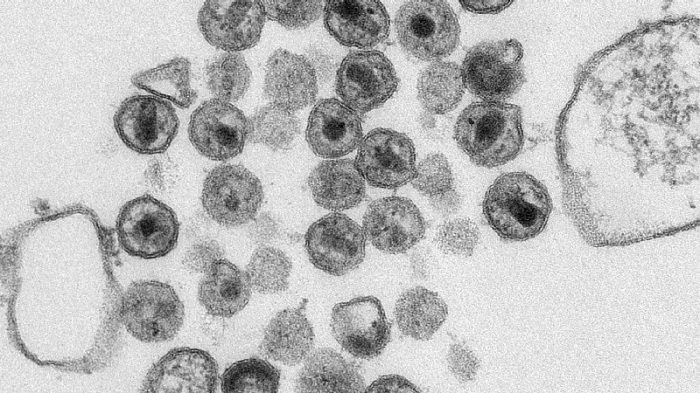A new anti-retroviral medication for the treatment of human immunodeficiency virus (HIV) infections was licensed by the US Food and Drug Administration and the European Union just over a year ago. The first medication made available to patients, lenacapavir, targets the HIV capsid, the virus's defense mechanism.
 The novel drug causes the HIV capsid to rupture before it can deliver its genetic material to the host cell nucleus. Image Credit: HIV particles; Public Health Image Library
The novel drug causes the HIV capsid to rupture before it can deliver its genetic material to the host cell nucleus. Image Credit: HIV particles; Public Health Image Library
Now, a global group of scientists headed by medical experts from UNSW Sydney has the specifics of how this innovative medication strains the HIV capsid to its limit, thus halting the virus's progression. The journal eLife revealed their discovery of the molecular pathways, which may aid in the development of better and more potent antiviral treatments.
HIV protects itself by encasing its genetic material in a protein coat while it enters the target cell and changes its genomic RNA into DNA on its way to the nucleus. Lenacapavir, a biopharmaceutical product created by Giliad Sciences, was intended to counteract the capsid's defenses.
Furthermore, this strong, long-acting medication is the first and only anti-HIV therapy that has been approved yet.
The fact that the capsid plays a central role in multiple stages of the viral life cycle, and therefore represents a really good drug target, is a concept that's only emerged in recent years.”
Till Böcking, Professor, School of Biomedical Sciences, University of New South Wales
Building Them Tough to Break Them Down
Through a combination of single-molecule imaging and cell infection investigations, the researchers demonstrated how lenacapavir interfered with the HIV life cycle. According to some theories, the medication hardens the capsid to keep the virus within and stop it from spreading. Rather, the team observed that the drug-fortified capsid became extremely fragile.
With our microscope setup, we can look at the integrity of the capsids. By monitoring the release of fluorescent tags loaded into the capsid, we can work out exactly when it cracks.”
Dr James C Walsh, Study Lead Author, School of Biomedical Sciences, University of New South Wales
The virus's capsid would burst in the target cell before it reached the nucleus, exposing its genetic material to the host cell's cytoplasm, which is a hostile environment. To investigate the long-term effects of lenacapavir on individual capsids, the researchers employed cell-produced, non-infectious HIV-like particles.
Bocking said, “What we found was that this hyper-stabilization led to a premature breakage of the capsid before the virus can finish converting its RNA into DNA.”
The team, which included Dr Leo James and other members of the Laboratory of Molecular Biology in the UK, also looked at the process of producing new capsids, simulating what would happen when freshly copied viral genomes are packed up for release from infected cells.
They discovered that by speeding up capsid construction and forcing building errors, lenacapavir also compromised capsid integrity at this stage of the HIV life cycle. Because of their improper closure, the malformed capsids that were created could not protect the viral genome from harm.
This work not only resolves the controversy of whether medications that target capsids enhance or weaken the capsid, but it also reveals a mechanism that may be used to target other viruses that produce capsids as a defense against host defenses.
Dr Walsh said, “Lenacapavir is orders of magnitude better than any other compound that targets the capsid. Our results give a really good blueprint for how this drug can be so incredibly effective.”
Source:
Journal reference:
Faysal, K. M. R., et.al., (2024). Pharmacologic hyperstabilisation of the HIV-1 capsid lattice induces capsid failure. eLife. doi.org/10.7554/eLife.83605.